Sketching
The Effect of Sketching on Learning from Science Text
Seductive details refers to highly interesting information within an expository text that is only tangentially related to the target concept (Garner, Gillingham, & White, 1989). When the presence of this information results in reduced comprehension for readers compared to when the same text is presented without the seductive information, this is called the seductive details effect (Garner, Brown, Sanders, & Menke, 1992). Previous work has attempted, and in most cases failed, to reduce the seductive details effect through pre-reading instructions (Peshkam et al. 2011), moving the seductive details to the beginning or end of the passage, highlighting main ideas, and introducing learning objectives (Harp & Mayer, 1998). A growing body of research suggests that sketching activities are beneficial for science learning, and moreover, that sketching can improve learning from science text (Ainsworth et al., 2011; Van Meter & Firetto, 2013). Across two experiments, this study tested whether a post-reading sketching task can reduce the impact of seductive details and facilitate learning of a complex science topic compared to a post-reading summary task, and whether receiving feedback could help to further support successful learning. Results indicated that summarizing, rather than sketching, provided the greatest benefit to recall of core concepts and overall text comprehension. However, both sketching and summarizing were effective strategies for reducing the seductive details effect. That is, both strategies were successful in reducing the number of seductive details recalled at test. (http://dx.doi.org/10.1037/edu0000254)
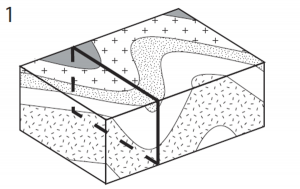
Learning from incorrect examples
Previous work from the lab has demonstrated that students who create predictive sketches of the internal structure of block diagrams improve their penetrative thinking skills compared to students who just copy correct sketches of the internal structure of a block diagram. This study sought to extend this work to see if correcting an incorrect sketch is as effective for improving penetrative thinking as generating a predictive sketch. The main question here is: Can correcting an incorrect sketch improve understanding as well as generating one’s own sketch?
In addition to investigating the effectiveness of incorrect examples for improving penetrating thinking ability, this work also aimed to employ an incorrect examples activity to help support learning from text.
Scaling
It’s All relative: Focusing on Relational Structure to Improve Young Children’s Scaling
The use of maps is suggested to be important for the development of spatial cognition, and experience with maps may improve spatial skills (Uttal, 2000). One important aspect of map use is children’s ability to complete spatial scaling. Children as young as three successfully scale from a model to referent spaces in extremely simple tasks (DeLoache, 1989). However, the age at which children succeed on scaling tasks seems to be dependent on the complexity of the task, perhaps due to the need for a more advanced understanding of the relational structure of maps and the space they represent. This project aimed to investigate the specific aspects of a scaling task that are difficult for children, and to improve children’s spatial scaling using progressive alignment, guided exploration, and feedback. Additionally, the relationship between children’s relational understanding of space and their numerical representation was explored.
In one study, we investigated 4- and 5-year-old children’s use of scaled and unscaled maps when solving mazes. Results show that almost all children used the maps to solve the mazes at least occasionally, and use them consistently across maze difficulty and different types of maps. Map use and more accurate spatial scaling were associated with better performance on the maze. We suggest that maze activities including scale maps might provide an opportunity for developing children’s spatial scaling through play.
Jirout, J. J., & Newcombe, N. S. (2014). Mazes and maps: Can young children find their way?. Mind, Brain, And Education, 8(2), 89-96. doi:10.1111/mbe.12048
Representation of Large Magnitudes of Time
There is a well established literature on how people represent and reason about time. For example, people unitize time, people use a hierarchically nested structure of event units to estimate when an event took place, time is spatialized using two distinct spatial metaphors, and the direction time moves is culturally dependent. However, such research has examined experiential amounts of time; there has been relatively sparse research concerning larger magnitudes of time (e.g. geologic time). Our research aimed to examine how the context of larger magnitudes of time may influence some of the findings discussed above. It is hypothesized that people reason about large magnitudes of time in the same way they reason about small magnitudes of time; however, different strategies and flexibility of representation may be related to expertise (those who have an expert understanding of thinking about large magnitudes). How experts (those who use large magnitudes) and novices represent large magnitudes was examined in a series of experiments.
In one study, we viewed how people reason about phenomena across scales, in three sections: (a) we developed a framework for how relational reasoning supports understanding extreme scales; (b) we identified cognitive barriers to aligning human and extreme scales; and (c) we outlined a theory-based approach to teaching scale information using relational reasoning, presented two successful learning activities, and considered the role of a unified scale instruction across STEM education.
Resnick, I., Davatzes, A., Newcombe, N. S., & Shipley, T. F. (2016). Using relational reasoning to learn about scientific phenomena at unfamiliar scales. Educational Psychology Review, doi:10.1007/s10648-016-9371-5
Hierarchical Alignment of Geologic Time
Students in the geosciences struggle to understand geologic time. Difficulty arises in part from the discrepancy between how people perceive and remember events in time and science’s conception of time as a single metric dimension. People tend to think in terms of familiar event units that range in magnitude bounded by a human lifetime. The current study examined the role of magnitude in understanding geologic time and reasoning about events that extend beyond the range of familiar experience. An intervention was designed based on the common classroom exercise of aligning time to a spatial representation. The intervention was designed to give students practice aligning time to space. Using progressive alignment, students aligned time to space beginning with a familiar personal time scale, working through different historic and geologic timelines, up to the Geologic Time Scale. The intervention group showed a reduction in the magnitude of temporal location errors compared to the control group, and had a more accurate sense of the relative proportions of geological events. Importantly, the intervention and control groups did not differ significantly on an item that was knowledge-based and did not require an understanding of magnitude. This suggests the intervention affected understanding magnitude of geologic time, and did not merely increase effort or motivation in the intervention group.
Resnick, I., Shipley, T., Newcombe, N., Massey, C., Wills, T. (2012). Examining the Representation and Understanding of Large Magnitudes Using the Hierarchical Alignment model of Analogical Reasoning. In N. Miyake, D. Peebles, & R. P. Cooper (Eds.), Proceedings of the 34th Annual Conference of the Cognitive Science Society (pp. 917- 922). Austin, TX: Cognitive Science Society.
Resnick, I. (2014). Role of linear representation of large magnitudes on understanding and estimation. Dissertation Abstracts International, 74,
Visual Sequencing
A skill that most geologists possess is the ability to assess the temporal sequence of events that produced the present state from the spatial arrangement of outcrops, map patterns, or cross-sections. Geologists report combining multiple field observations with prior knowledge to mentally animate a sequence of transformations that correspond to geological events (sedimentation, folding, etc.) The skills used to interpret geological structures (e.g., unconformities) as temporal sequence may be generally applicable. We designed a working memory task to further investigate this skill. Results thus far indicate that visual sequencing memory is related to spatial working memory (r=.68).
Future research involves collecting data on geoscience experts and comparing their performance with student performance. Potential implications are: 1) That educators may be able to use students’ performance on established working memory tasks to determine who will have difficulty with the visual sequencing skill out in the field; 2) The effects of training spatial working memory may transfer to visual sequencing ability; and 3) Understanding ambiguity is difficult for students, and potentially merits being addressed pedagogically.
Visualizing 3D and Transformations
This research involved studying 3D visualization and transformation in the context of the geosciences. The ability to mentally penetrate the interior of an object and visualize objects in 3D (is) key to success in the geosciences. Yet these are very difficult skills for geoscience students to master. We have had several approaches aimed at improving these mental processes.
Peeling back the layers: Understanding the role of working memory in penetrative thinking
The goal of this study was to begin to investigate how an important cognitive construct, working memory capacity, may contribute to penetrative thinking performance as assessed by the
Geologic Block Cross-Sectioning Test (GBCS). Preliminary results have suggested that, while spatial thinking skills contribute to performance on all geologic block item types, working memory only contributes to a subset. This indicates that spatial thinking skills and working memory capacity may impact penetrative thinking in different ways.
Testing Penetrative Thinking

We studied penetrative thinking as it relates to geoscience education. We developed a measure of penetrative thinking (i.e., 3D visualization and transformation) called the Geo Block Test. This test requires students to incorporate information from multiple faces to penetrate or reason about the likely interior of the object. We used this test as our measure of penetrative thinking.
Using Alignment to Improve Penetrative Thinking
The ability to mentally penetrate the interior of an object relies on the integration of information from multiple faces. In the field, structural geologists take the exterior information presented at multiple outcrops and use it together to infer the underlying structure. Alignment can promote learning by emphasizing common spatial relationships (Christie and Gentner, 2010; Gentner and Sagi, 2006). In this project we used progressive alignment as a tool to help students understand that in order to visualize the interior of an object, one needs to incorporate information from multiple faces.
Atit, K., Gagnier, K., & Shipley, T. F., (2015). Students’ gestures help their penetrative thinking skills. Journal of Geoscience Education, 63 (1, February), 66-72.
Using 3D experience to Facilitate Penetrative Thinking
Penetrative thinking is challenging in part because the observers has to visualize a 2D object as a 3D figure. In this project we examined whether experience with a 3D model of a geologic block diagram made of Play-doh (shown in Figure 2) will improve penetrative thinking.
Gagnier, K. M., Atit, K., Ormand, C. J., & Shipley, T. F. (2017). Comprehending Diagrams: Sketching to Support Spatial Reasoning. Topics in Cognitive Science.
Mental Transformation
This line of research attempts to categorize the role of mental transformation in geology, with additional goals of developing both educational strategies and assessments. Geologists self-report that they look at an outcrop and play back in their mind the sequence of transformations, mentally animating the transformations from the present spatial configurations back to horizontal sedimentary layers.
An initial study examined if geologists are objectively able to make such mental transformations, and, if they are, is the skill domain specific or domain general. An objective measure was developed using words that were transformed in one of three ways, and the task was to identify the word. To make the task more demanding additional characters were added in between each letter of the word . Words were broken up into pieces along diagonal lines. These pieces were translated as if faulted or were randomly displaced . Additionally, a set of third items were developed to address the potential role of disembedding, with the transformations separated by space.
Geologists were significantly better than two control groups, with no difference in performance within groups between the faulted and randomly displaced items, suggesting the geologists have a domain general ability to make mental transformations that is superior to matched novices. All three groups performed better on the exploded words, however Geologists still outperformed both control groups. This finding suggests that while disembedding is helpful for this task, it is not the sole explanation for the Geologist’s skill. Important to note, geologists performed at the same rates on a mental rotation task as chemists (one control group from another science that requires spatial reasoning), but significantly outperformed the chemists on this task of mental transformation.
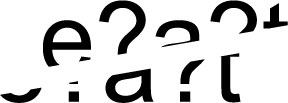
Resnick, I. & Shipley, T.F., (2013). Breaking new ground in the mind: An initial study of mental brittle transformation and mental rigid rotation in science experts. Cognitive Processing, 14(2, May), 143-152.
Inferring the Shape of a Penetrating Object
We are currently developing another measure of penetrative thinking in which students are asked about the shape of an object that penetrated a cylinder. Students are presented with the cylinder shown in Figure 5. They are told the white holes represent the entrance and exit of an object that penetrated the cylinder. They are then shown the array of possible objects (ranging from a circle to a teardrop shape) and asked to select the shape of the penetrating object.
Spatial Memory
The ability to accurately encode intra and inter-object space is the foundation of spatial thinking. We examined how movement at encoding – e.g., walking around an object versus rotating an object – can be manipulated to enhance spatial memory.
Spatial Memory
Because we move around in the world, we typically encounter spatial configurations from multiple viewpoints. Multiple viewpoints present novel spatial information, but exactly what is added depends on spatial scale. In large-scale spaces, such as cities, we need multiple viewpoints so that we can see additional spatial locations. Small-scale spaces, such as tabletop arrays, allow us to see the global configuration from a single vantage point. However, multiple viewpoints of a small-scale space still add information because they present additional spatial orientations of the global configuration. This study examined if experiencing the transition between multiple viewpoints of a small-scale space improves spatial learning and memory (e.g., a tabletop landscape). In the control condition, participants viewed the landscape as a series of static views. In the remaining conditions, participants experienced the transition between viewpoints by rotating the landscape or moving around it. Both types of transitions improved spatial learning and memory. In a second experiment, we added a passive rotation condition to examine the effect of watching the transition without actively generating it. Spatial performance was equivalent across active and passive rotation conditions, with both outperforming static views. Together, these findings suggest that continuous visual flow is key to small-scale spatial learning and memory.
Flexible Spatial Memory
In our next study, we examined the ability to recall a spatial configuration from multiple perspectives, known as “spatial flexibility.” Spatial flexibility is quite challenging, especially when entire configuration cannot be viewed from a single vantage point. For example, the configuration may simply be too large (e.g., the layout of a city), or alternatively, a structure within it may occlude the view of others (e.g., a table setting with a large centerpiece). In either scenario, spatial information is viewed piecemeal from multiple viewpoints that present small chunks of the global configuration. Thus to reason between locations viewed sequentially, spatial information must first be integrated before it can be flexibly recalled.
Our study examined if experiencing the transition between multiple viewpoints enhances spatial flexibility for a configuration that could be viewed from a single vantage point (Exp. 1) and for one that could not (Exp. 2). In both experiments, participants viewed an array of dollhouse furniture in one of five ways. The control condition presented the dollhouse as a series of static views, whereas in the remaining conditions, visual flow was continuous. Participants viewed the natural transition between viewpoints, and either passively experienced the transitions (by watching the dollhouse rotate or being rolled around it), or actively generated them (by rotating the dollhouse or walking around it). Across both experiments, continuous visual flow significantly enhanced spatial flexibility when paired with observer movement around the dollhouse, either active or passive. Furthermore, when participants had to integrate spatial information across discrete learning experiences (Exp. 2), active movement provided a significant advantage above passive experience. These findings suggest that array stability is key to flexible spatial memory, with action providing an additional boost to spatial integration.
Memory Development
Marvelous Moments Project
The development of memory during early childhood is a learning process, but what does that development look like in the brain? In our current study, we aim to understand how the neural systems responsible for our memory grow and adapt throughout the stages of early life. Read more here: https://templeinfantlab.com/research/memory-research/
Development of Cognitive Maps
Building cognitive maps allows for flexibility in navigating the world around us. Having a mental reconstruction of the city you live in will help greatly in navigating from point A to point B and forming more efficient paths between locations through shortcuts. The development of navigation behavior extends from infancy through adolescence, but we know relatively little about the neural processes underlying this behavior in humans. In this study, we aimed to add a novel insight on how these processes form during childhood and are modified into adulthood using behavioral and MRI methods. We created a virtual environment where children navigated through by playing a scavenger hunt game. Additionally, our research included a component that attempts to disentangle how spatial abilities map onto non-spatial contexts. In this game, kids viewed child-friendly pictures on a screen and earn a prize for completing all the levels. Using a novel spatial virtual navigation game and an innovative non-spatial game, this study worked with children from 8-12 years to learn more about how their brains work!
Related study results:
Paper: Nazareth, A., Weisberg, S. M., Margulis, K., & Newcombe, N. S. (2018). Charting the development of cognitive mapping. Journal of experimental child psychology, 170, 86-106. https://www.sciencedirect.com/science/article/pii/S0022096517305052
Poster: Brucato, M., Nazareth, A., & Newcombe, N. S. (2019, October) Longitudinal Development of Cognitive Maps. Poster presented at the Cognitive Development Society, Louisville, KY.

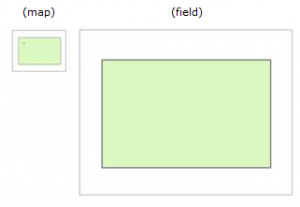
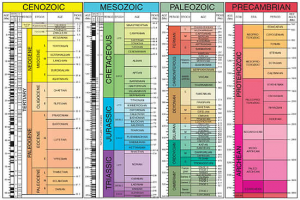
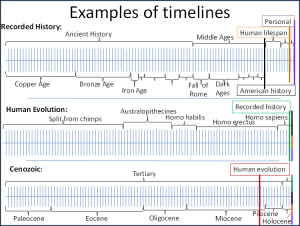
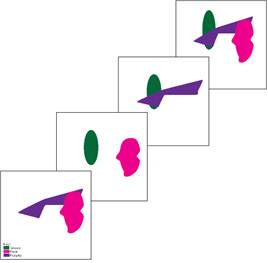
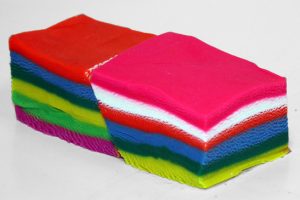



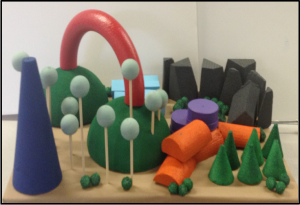
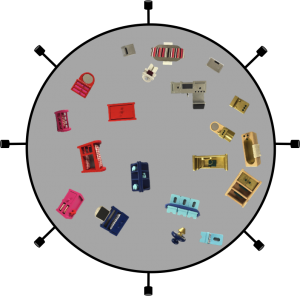
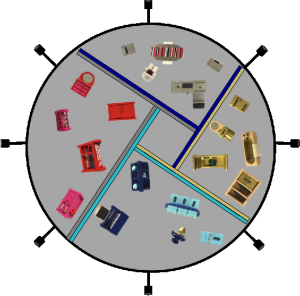
You must be logged in to post a comment.